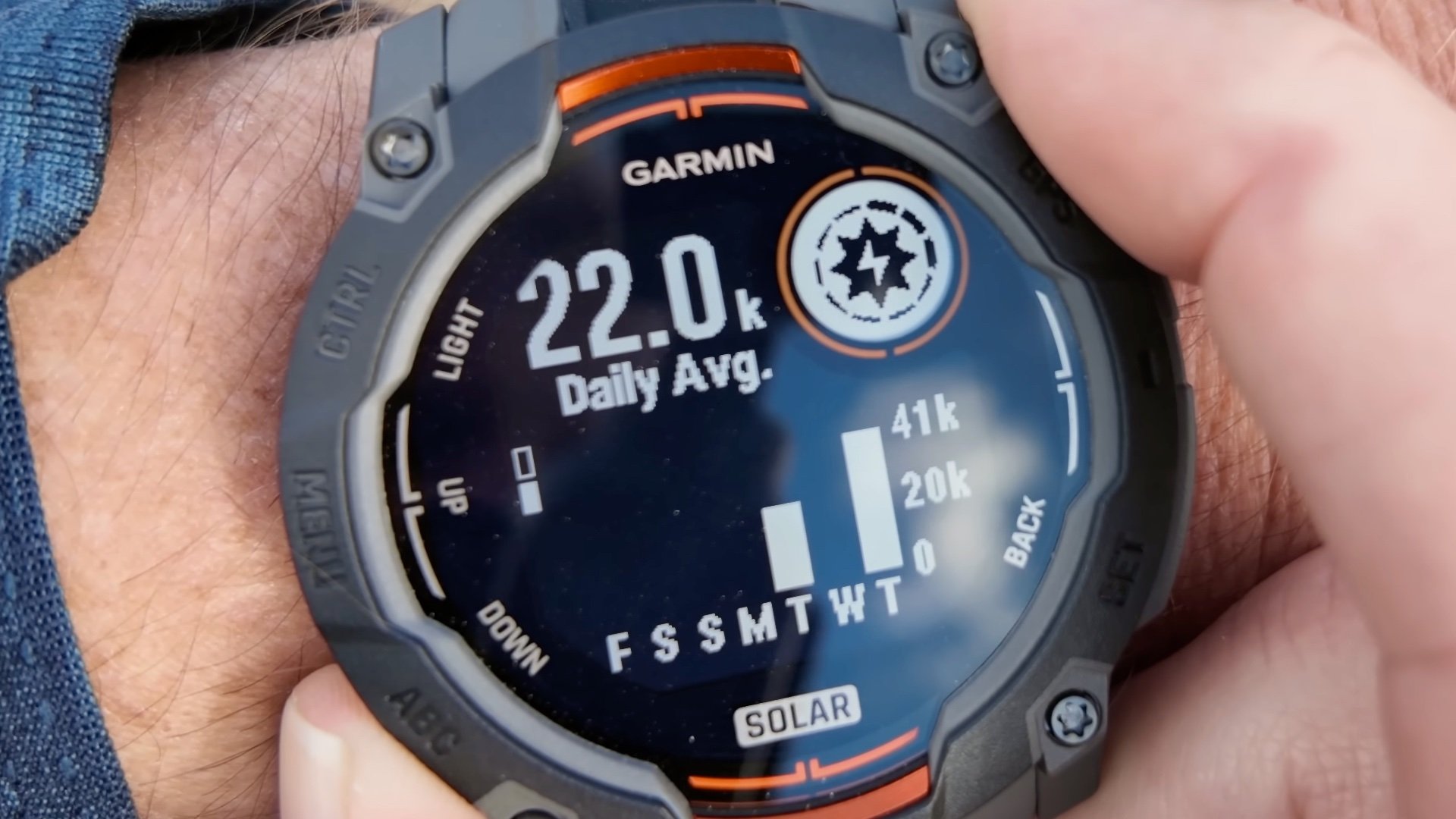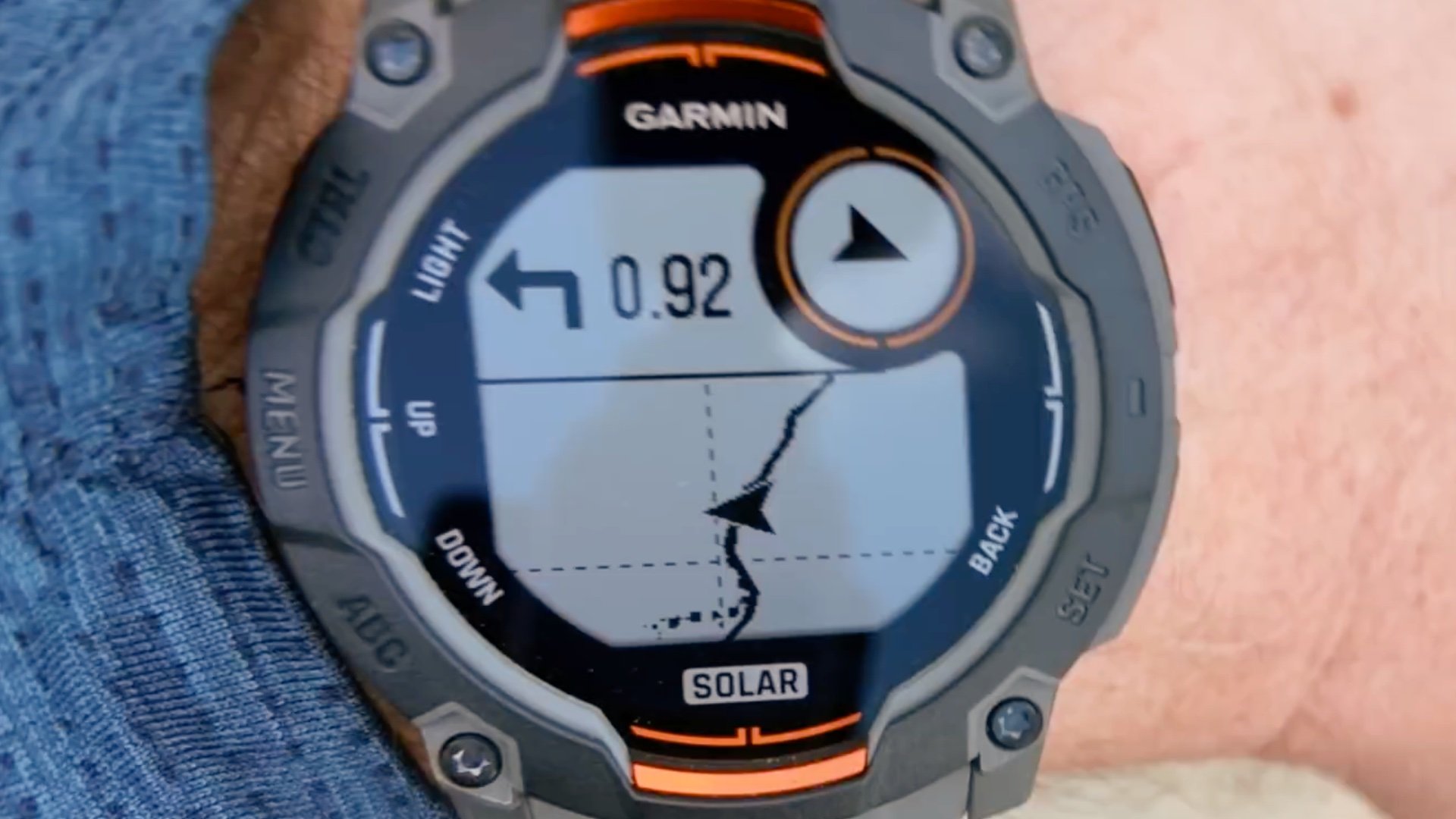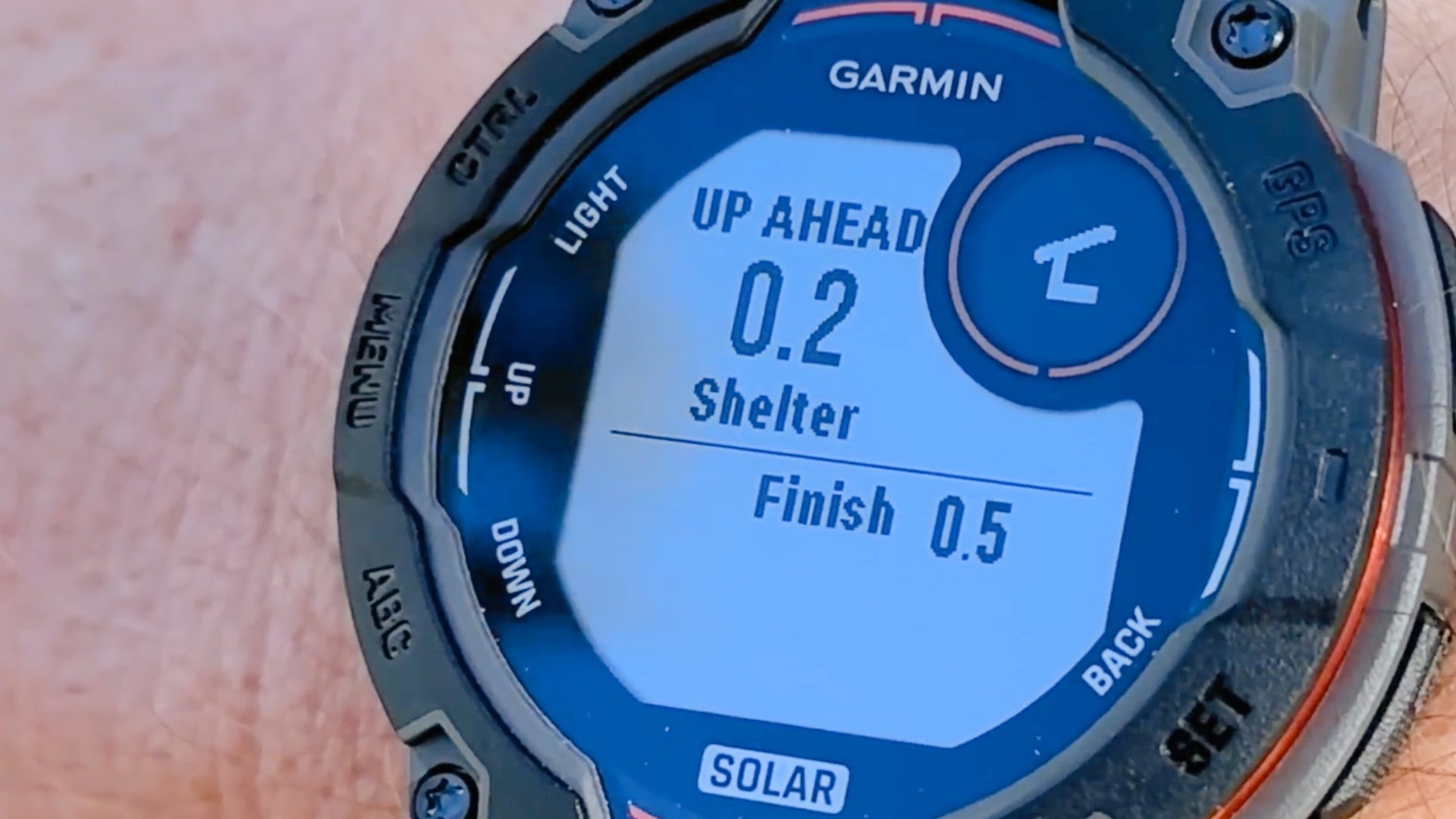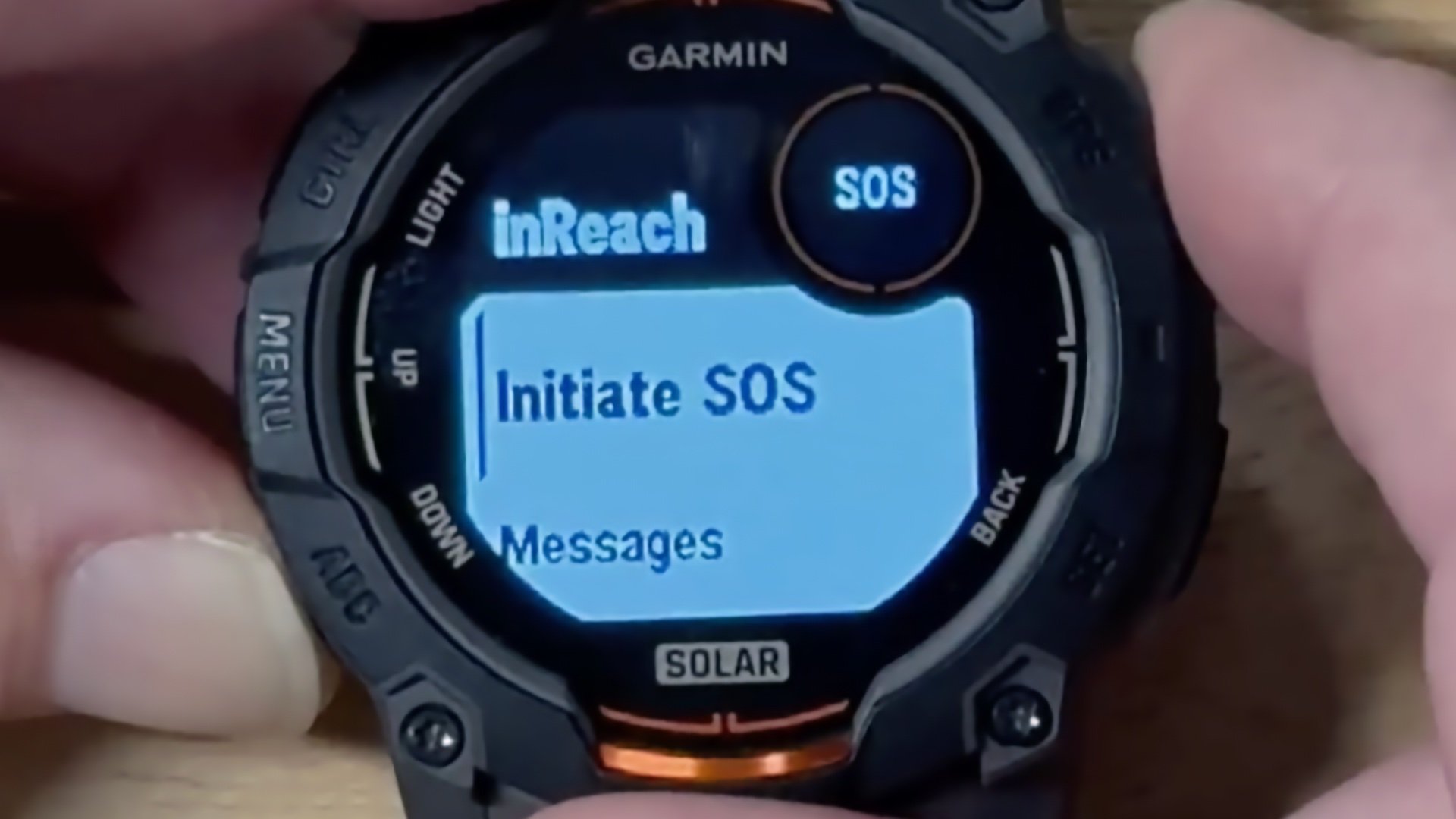
Garmin Instinct 3 Solar Review
I’ve been seeing more hikers use their phones for everything, especially on long trails like the PCT. It works until the battery tanks or the weather turns ugly. That’s where a watch like the Garmin Instinct 3 Solar becomes a simple, tough backup that just keeps running. I took the 50 mm Solar out on the trail and tracked hikes, navigation, daily data, and inReach pairing. Here's what I found out.
No Sponsors, No AI
I didn’t accept a free Instinct 3 Solar from Garmin. I bought it with my own money so I could share honest observations, not marketing bullet points. If you’d like to support independent, ad-free reviews like this, you can join me on Patreon or use my affiliate links at Amazon or REI. Every bit helps keep the site going.
What the Instinct 3 Does Well

The Instinct 3 Solar isn’t trying to be a tiny smartphone on your wrist. It’s built for people who want something dependable that works the same in heat, cold, rain, and sweat. Out on the trail, that’s worth something. While other watches have nicer screens and more apps, the Instinct leans into being simple and tough. It gives you the info you need and lasts a long time on a charge.
Why it works on the trail:
- You can check distance or pace without digging for your phone
- The battery lasts way longer than any AMOLED watch
- Buttons work in rain, cold, or when your fingers are sweaty or dirty
- You can do basic navigation and get an alert if you are off-trail
- Nothing about it feels delicate or fussy
- It just does its job without becoming another thing you have to manage
I tested the 50 mm Solar. It’s big, but still a touch smaller than my Fenix 8 51 mm. The shape and build feel a bit like an old G-Shock, which is another way of saying it’s rugged and doesn’t care what you put it through.
Battery Life: Real Numbers

Garmin throws out some impressive battery stats for the Instinct 3 Solar, but I wanted to see what it actually does on real hikes, not in a lab. After a few weeks of mixed terrain, varied sunlight, and normal trail use, these are the numbers that kept coming up.
- Mixed canopy, GPS only: about 75 hours
This was on typical forested trails where you’re dipping in and out of shade. Even with navigation running, the battery barely moves. It’s one of the few watches where you can track multiple full days in a row without topping up. - Full sun above tree line: around 150 hours
This is where the Solar panel earns its keep. If your wrist is in direct sunlight for long chunks of the day, the battery climbs instead of drops. I repeatedly ended days with more battery than I started with. - Smartwatch mode, no GPS: roughly 40 days
With light to moderate sun, this turns into “charge it once and forget about it for a month or two.” Sunrise, sunset, elevation, steps, sleep, and morning report barely make a dent. - Charge time from empty: about 2 hours
If you ever do run it down, a quick wall charge gets it back to full. No slow trickle, no special cable quirks.
One thing I found helpful: Battery Saver charges faster in low sun because it shuts off the power-hungry sensors. You can also customize Battery Saver so it only turns off the things you don’t need. If you're trying to squeeze the most out of the solar panel at camp or on a zero day, flipping it on makes a noticeable difference.
Form Factor and Buttons

The Instinct 3 Solar keeps the classic five-button layout that Garmin’s been using forever, and it’s one of the reasons it works so well on the trail. There’s no touchscreen to fight with. No swiping through menus with wet fingers. No hoping the screen recognizes your touch when you’re cold, sweaty, or wearing gloves. The buttons are simple, clicky, and predictable.
The watch itself has that tough, old-school feel. The 50 mm Solar I tested has a big, slightly retro look, almost like a modern take on a G-Shock. The plastic case is durable and something that can take a decent thrashing and probably less care than a fancier watch like a Fenix.
Side by side the buttons on the Instinct do take a little more pressure than the Fenix, but after you press them a few times you forget about it. On a hike, especially if you’re using trekking poles or dealing with rain, buttons beat a touchscreen 100%. You always know what’s going to happen when you press something, and you can flip through your screens without slowing down.
Tracking and Navigation

Tracking a hike is about as simple as it gets. Hit the upper-right button, choose Hike, wait for GPS lock, and start walking. You can customize the data screens to show whatever you want: pace, distance, elevation, respiration, sunset, temperature, all the usual Garmin fields.
GPS accuracy has been solid for me. The watch offers GPS, All Satellites, and Multi-Band, but Multi-Band burns more battery. If you want the longest run time, just stick with GPS. If I was doing a long thru-hike and wanted to minimize charging, that's what I would use.
There are no maps on the Instinct 3 Solar, but you can still load a course and see whether you’re on the line or drifting off it. You get breadcrumb routing, off-course alerts, turn prompts, and track-back if you get lost. For most hikers, that’s all you need. If you want full topo maps, pair the watch with the free Garmin Explore app on your phone and you’ll see your real-time position on offline maps there.
Getting routes onto the watch is easy. You can build a course in Garmin Connect, import a GPX file, or use AllTrails’ “Send to Garmin” button. Even long trails like the PCT work fine if you load them in sections from a GPX. But loading an entire thru-hike onto the watch at once will blow its mind. Same thing for the fancier Enduro and Fenix models too.
inReach Integration

This is one of the strongest reasons to pick up an Instinct over a cheaper smartwatch. Garmin’s inReach integration is solid, and on the trail it ends up being one of those features you don’t appreciate until you need it. When the Instinct 3 Solar is paired with an inReach, you can handle almost everything right from your wrist:
- Trigger SOS
- Read incoming messages
- Send presets or quick replies
- Start and stop satellite tracking
- See message confirmations without pulling out the device
If you keep your inReach clipped to the back of your pack like most hikers do, being able to handle all of this from the watch is a big quality-of-life upgrade. You’re not stopping to unclip the device, unzip a pocket, or wrestle with tiny buttons. In an emergency, or even just when you’re tired at the end of the day, being able to handle communication from your wrist is a huge win.
And because the Instinct uses buttons instead of a touchscreen, the whole setup keeps working in rain, cold, or with gloves on, which isn’t something you can say about relying on your phone alone. If you bring an inReach on hikes, pairing it with the Instinct 3 Solar makes the whole system simpler and more reliable.
Recommendations

After using the Instinct 3 Solar on real trails and showing how it handles navigation, tracking, and course following, the bigger picture is pretty simple: this is a watch that just works. You still get all the Garmin health features like sleep tracking, morning report, recovery hints, which can be surprisingly useful when you wake up and want a quick read on how realistic a long day on the trail might be. It’s not trying to be a full mapping computer or a smartwatch with endless apps. It’s a durable, long-battery tool you can use day after day.
There have been bugs along the way, and Garmin hasn’t had the cleanest firmware track record recently, so it’s worth checking the Instinct 3 support forums to see what people are experiencing now. But overall, if you want a simple, reliable watch for thru-hiking or just something that helps you stay on route, keep an eye on your basic health stats, and avoid constant charging, the Instinct 3 Solar is one of the best options out there.
If you like everything about the Instinct 3 but want full maps on the wrist, look at the Enduro 3. It's a very different, and more expensive, watch that has preloaded maps and navigation, but it's also a solid pick.